Champions:
Inspiring a Culture of Safety in the Manufacturing Sector




Table Of Contents

Chapter 1:Understanding SafetyCulture2
Chapter 2:TheRoleof Leadershipin Safety10
Chapter 3:Engaging Employees in SafetyPractices19
Chapter 4:Training andEducation for Safety27
Chapter 5:Identifying andAssessing Risks35
Chapter 6:Promoting SafeWork Practices44
Chapter 7:Reporting andInvestigating Incidents53
Chapter 8:Recognizing andRewarding Safety61
Chapter 9:Continuous Improvementin SafetyCulture69
Chapter 10:Building aSustainableSafetyCulture78


01 Chapter 1: Understanding Safety Culture




De�ning Safety Culture
De�ning safety culture involves understanding the collective attitudes, perceptions, and behaviors regarding safety within an organization. In the manufacturing sector, safety culture is not merely a set of rules and regulations; it encompasses the values and beliefs shared by all employees. This culture shapes how safety is prioritized in dailyoperationsand in�uencesindividual and team behaviors. A strong safetyculture promotes an environment where safety is everyone’s responsibility, encouraging employees to actively participate in safety initiatives and express concerns without fear ofreprisal.
At its core, safety culture is re�ected in the commitment of both management and employees to prioritize safety in every aspect of their work. This commitment manifests in the way safety policies are implemented, communicated, and enforced. In manufacturing, where the risks can be signi�cant, the presence of a robust safety culture canleadto a dramatic reductioninincidentsandinjuries.Employeeswho feel thattheir safetyisvaluedare more likelytoadhere tosafetyprotocols,engage insafe practices,andcontribute toa collective efforttomaintaina safe workplace.
An essential component of safety culture is open communication. Encouraging dialogue aboutsafetyconcerns creates a transparent environment where employees feel empowered to voice their thoughts. This communication can take various forms, from safety meetings to suggestion boxes, and should be actively promoted by management. When employees see that their feedback leads to tangible changes, it strengthens their belief in the safety culture and fosters a sense of ownership over their ownsafetyandthatoftheir colleagues.



Training andeducationplaya vital role in shaping safety culture. Regular training sessions ensure that all employees are well-informed about safety practices, potential hazards, and emergency procedures. Moreover, incorporating safety training into onboarding processes helps to instill a safety-�rst mindset from the very beginning of an employee’s tenure. Continuous education reinforces the importance of safety and keeps it at the forefront of daily operations, helping to embed it into the organizational culture.
Ultimately, de�ning safety culture in the manufacturing sector requires a commitment to ongoing improvement and adaptability. As industries evolve and new technologies are introduced, the safetyculture mustalso adaptto address emerging risks and challenges. This commitment ensures that safety remains a dynamic aspect of the workplace, constantly evolving to meet the needs of employees and the organization. By fostering a strong safety culture, manufacturing companies not only protect their employees but also enhance productivity and morale, creating a win-win situation for everyone involved.
Importance of Safety in Manufacturing
Safety in manufacturing is not just a regulatory requirement; it is a fundamental aspect of the operational success and sustainability of any manufacturing organization. The importance of safety extends beyond compliance with laws and regulations; it encompasses the overall health and well-being of employees, the quality of products, and the �nancial performance of the company. When safety is prioritized, it fosters an environment where employees feel valued and protected, leading to increased morale and productivity. Understanding the critical role of safety in manufacturing helps employees recognize their contributionstoa broader safetyculture.



A robustsafetyculture ischaracterized by shared values, beliefs, and practices regarding safety among all employees in a manufacturing setting. It begins with leadership that is genuinely committed to promoting safety and extends to every �oor worker. When safety is deeply embedded in the fabric of the organization, it encourages open communication about safety concerns and proactive measures to address them. Employees who are engaged in safety practices are more likely to identify hazards, report incidents, and suggest improvements, contributing to a safer workplace overall.
In addition to enhancing employee engagement, a strong safety culture directly impacts the quality of products produced. Safety-related incidents can lead to production delays, compromised product quality, and signi�cant �nancial losses. By fostering a culture that emphasizes safety, manufacturers can minimize disruptions and maintain the integrity of their production processes. This not only protects the company’s bottom line but also enhances its reputation in the marketplace, as customers increasingly favor businesses that prioritize safety and ethical practices.



Moreover, the �nancial implications of safety in manufacturing cannot be overstated. Workplace injuries and accidents lead to increased costs related to workers’ compensation, medical expenses, and lost productivity. By investing in safety training and initiatives, companies can reduce these costs signi�cantly. A proactive approach to safety not only protects employees but also results in lower insurance premiums and higher pro�tability. Thus, organizations that prioritize safety are more likely to achieve long-term �nancial stabilityandgrowth.
Finally, cultivating a culture of safety in manufacturing is essential for compliance with industry regulations and standards. Regulatory bodies impose stringent safety requirements, and failure to adhere to these can result in severe penalties, including �nes and shutdowns. By embedding safety into everyday practices, organizations ensure compliance while simultaneously fostering a culture of accountability and responsibility among employees. This commitment to safety not only safeguards the organization but also contributes to a sustainable future where employees thrive in a safe and healthy environment.




Key Components of a Strong Safety Culture
A strong safetyculture inthe manufacturing sector isbuiltonseveral keycomponents that together create an environment where safety is prioritized and integrated into daily operations. One of the most vital components is leadership commitment. Leaders in manufacturing must not only endorse safety policies but actively participate insafetyinitiatives.Whenleadershipdemonstratesa genuine commitment to safety, it sets the tone for the entire organization. Employees are more likely to engage in safe practices when they see their leaders prioritizing and valuing safety as a core aspectofthe company'smission.

Another essential component is employee involvement. A robust safety culture thrivesonthe active participation of all employees, from the shop �oor to management. This involvement can take manyforms,including safetycommittees, regular safety meetings, and open forumsfor discussingsafetyconcerns.
When employees feel that their input is valued and their voices are heard, they are more likely to take ownership of safety practices and advocate for improvements. Encouraging a sense of shared responsibility fosters a culture where everyone plays a role in maintaininga safe workplace.
Training and education are also critical components of a strong safety culture. Continuous learning ensures that employees are equipped with the knowledge and skills necessary to identify hazards and respond appropriately.



Regular training sessions, workshops, and refresher courses contribute to a well-informed workforce that understands the importance of safety protocols and can implement them effectively.
Moreover, training should be tailored to speci�c job functions and risks withinthe manufacturingenvironment, ensuring that employees are prepared to handle the unique challenges they mayencounter.

Communication plays a vital role in sustaining a safety culture. Open and transparent communication about safety issues, incidents, and best practices helps to create a climate of trust and accountability. Employees should feel comfortable reporting hazards or near-misses withoutfear of retribution, knowing thattheir input will be taken seriously and acted upon. Regular communication channels, such as safety bulletins, newsletters, and meetings, can help reinforce the importance of safety and keep everyone informed aboutcurrentinitiativesandsafetyperformance.
Lastly, recognition and reinforcement of safe behaviors help solidify a strong safety culture. Acknowledging and rewarding employees for their commitment to safety not only boosts morale but also encourages others to prioritize safety in their own work. Implementing recognition programs, such as safety awards or shout-outs during meetings, can motivate employees to maintain high safety standards. By consistently reinforcing the importance of safety and celebrating successes,organizationscancultivate anenduring safety culture that becomes ingrained in their operational practices.





Chapter 2: The Role of Leadership in Safety



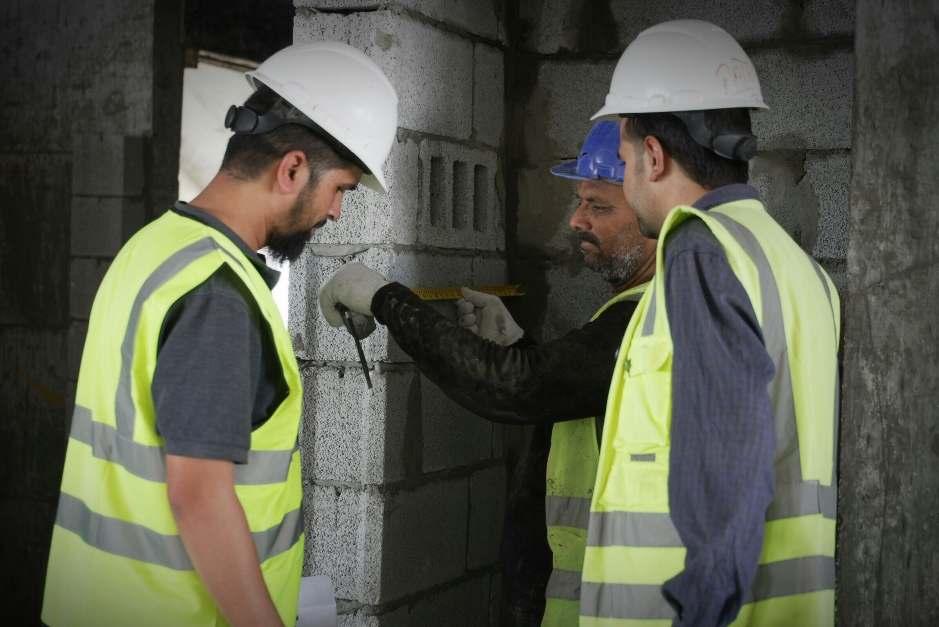
Leadership Commitment to Safety
Leadership commitmentto safetyisa crucial elementin fostering a robustworkplace safety culture within the manufacturing sector. When leaders prioritize safety, it sets a clear expectation that safety is a core value of the organization. This commitment is not merely about compliance with regulations; it involves actively engaging with employees at all levels to create an environment where safety is everyone's responsibility.Leadersmustdemonstrate their dedicationthroughvisible actions,such asparticipating in safetytraining sessionsor regular safetymeetings, which reinforces the message thatsafetyisintegral tothe company'soperations.
Effective leadershipinsafetyrequiresopencommunicationbetweenmanagement andemployees.Leadersshouldcultivate anatmosphere where employeesfeel empoweredtoreporthazards,share safetyconcerns,andsuggestimprovements withoutfear ofreprisal.


This two-way communication builds trust and encourages a proactive approach to safety.Whenemployeesbelieve thattheir voicesare heardandvalued,theyare more likely to take ownership of their safety and the safety of their colleagues. Regular feedback sessionsand safetysurveyscan further enhance thisdialogue, ensuring that safetyremainsa priorityinday-to-dayoperations.
Moreover,leadersmustprovide the necessaryresourcesandtrainingtosupportsafety initiatives. This includes investing in safety equipment, implementing comprehensive training programs, and ensuring that all employees understand proper safety protocols. By allocating resources towards safety, leaders not only comply with legal requirements but also demonstrate a genuine commitment to the well-being of their workforce. Thisinvestmentin safetyfostersa culture where employeesrecognize that their health and safety are paramount, leading to reduced accidents and increased overall productivity.
Recognition and reward systems play a signi�cant role in reinforcing a culture of safety.Leadersshouldacknowledge andcelebrate safetyachievements,whether it'sa team reaching a certain number of days without an incident or an individual who consistently promotes safe practices. Such recognition can motivate employees to prioritize safety in their daily tasks and encourage their peers to do the same. By making safety a celebrated aspect of the workplace culture, leaders can foster a sense ofpride andaccountabilityamongemployees.
In conclusion, leadership commitment to safety is foundational in shaping a positive workplace safety culture in the manufacturing sector. By actively engaging with employees, communicating openly, providing resources, and recognizing achievements, leaders can inspire a culture where safety is valued and prioritized. As employees witness their leaders’ dedication to safety, they are more likely to adopt similar attitudes, resulting in a safer, more productive work environment. Ultimately, this commitment not only protects employees but also contributes to the long-term successofthe organization.

Setting Safety Goals and Expectations
Setting safety goals and expectations is a fundamental step in fostering a robust safety culture within the manufacturing sector.Establishing clear andmeasurable safety goals provides a roadmap for employees at all levels to understand their roles in maintaining a safe workplace.
These goals should align with the organization'soverall safetyvisionandbe communicated effectively to ensure that every employee is on the same page. By involving employees in the goal-setting process, organizations can enhance buyin and commitment, as individuals are more likely to engage in safety practices when they feel a sense of ownership and responsibility.
To create effective safety goals, it is essential to focus on both short-term and long-term objectives. Short-term goals can include speci�c targets such as reducingincidentrates,improvingthe use of personal protective equipment (PPE), or conducting regular safety training sessions.
These goals serve as immediate benchmarks, allowing employees to see progress and understand the importance of their contributions. Long-term goals may involve broader initiatives like achieving industry safety certi�cations or implementing advanced safety technologies. Balancing these two types of goals helps maintain motivation and encourages a continuous improvement mindset within the workforce.
Expectations for safety should be clearly de�ned and communicated to all employees. This includes outlining the speci�c behaviors and practices that are necessary for maintaining a safe working environment. For instance, employees should be made aware of the importance of reporting hazards,participatinginsafetytraining, and following established safety protocols.

Establishing clear consequences for noncompliance, as well as recognizing and rewarding safe behaviors, reinforces the importance of safety and encourages employees to take responsibility for their ownsafetyandthatoftheir colleagues.
In addition to setting goals and expectations, it is vital to provide the necessary resources and support to help employeesachieve these objectives.
Thismayinclude offeringaccesstosafety training programs, providing updated safety equipment, or facilitating regular safety meetings where employees can discuss concerns and share best practices.
Creating an environment where employees feel empowered to voice their opinions and contribute to safety discussions fosters a sense of community andcollaboration.
When employees see that their organization is committed to their safety, they are more likely to embrace the safety culture and actively participate in itspromotion.
Finally, it is essential to regularly review and adjust safety goals and expectations in response to changing circumstances withinthe manufacturingenvironment.



This involves analyzing incident reports, gathering employee feedback, and staying current with industry standards andregulations.
By continuously evaluating safety performance and making necessary adjustments, organizations can ensure that their safety culture remains dynamic andresponsive.
This adaptive approach not only enhances safety outcomes but also demonstrates a commitment to ongoing improvement, ultimately inspiring a culture of safety that permeates every level ofthe manufacturingsector.
Leading by Example
Leading by example is a fundamental principle in cultivating a robust safety culture within the manufacturing sector. Employees are more likely to engage in safe practices when they observe their leaders prioritizing safety in their daily operations.



This commitment is not limited to simply enforcing rules; it extends to demonstrating personal accountability and proactive behavior in all safety matters. When leaders embody the values of safety, their actions send a powerful message that safety is an integral part of the workplace culture, in�uencing employees to adopt similar attitudes.
One of the most effective ways to lead by example is through regular participation in safety training and drills. When supervisors and managers actively engage in these activities alongside their teams, it reinforces the importance of safety protocols and illustrates that safetyisa collective responsibility.
This participation also provides leaders with �rsthand experience of the challenges employees face, enabling them to make informed decisions about safety practices and policies. Furthermore, it encourages open dialogue between employees and management, fostering a more inclusive environment where safety concerns can be addressedcollaboratively.



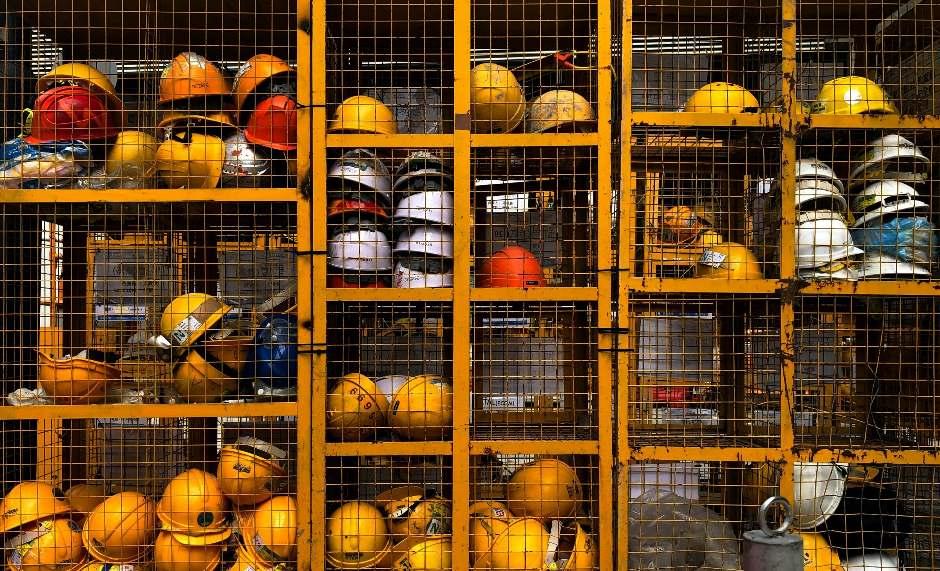
Recognition of safe behaviors is another crucial aspect of leading by example. Leaders should not only comply with safety procedures but also acknowledge and reward employees who demonstrate safe practices. Celebrating these behaviors reinforcestheir importance andencouragesotherstofollowsuit.
This recognition can take various forms, from verbal praise to formal awards, but the key is to ensure that safety achievements are highlighted and valued within the organization. When employees see that their efforts toward maintaining a safe workplace are appreciated, they are more likely to continue prioritizing safety in their dailyroutines.
Moreover, leaders must be transparent about safety performance and challenges. Sharing safety statistics, incidents, and lessons learned promotes a culture of openness and continuous improvement. When leaders communicate both successes and setbacks, it builds trust and encourages employees to be forthcoming about their ownsafetyconcerns.


This transparency cultivates an environment where everyone feels responsible for safety and empowered to contribute to solutions. It also emphasizes that safety is an ongoingjourney,nota destination,requiringconstantvigilance andadaptation.
In conclusion, leading by example is a vital strategy for fostering a safety culture within the manufacturing sector. Leaders who actively participate in safety initiatives, recognize safe behaviors, and promote transparency create an environment where safetyisprioritizedandvalued.
Employees are more inclined to adopt safe practices when they see their leaders genuinely committed to maintaining a safe workplace. By embodying the principles of safety in every action, leaders inspire their teams to embrace a culture of safety that ultimatelyenhancesthe well-beingofeveryone inthe organization.


03 Chapter 3: Engaging Employees in Safety Practices

Importance of Employee Involvement
Employee involvement is a cornerstone of cultivating a strong safety culture within the manufacturing sector. When employees are actively engaged in safety practices, theycontribute toa sharedresponsibilitythatenhancesoverall workplace safety.
This involvement fosters an environment where safety is prioritized, leading to a decrease in accidentsand injuries. Byrecognizing the importance of each employee's role in maintaining a safe workplace, organizations can create a culture where safety isnotjusta policybuta fundamental value sharedbyall.
One of the primary bene�ts of employee involvement is the accumulation of diverse insights that employees bring to the safety conversation. Workers on the front lines possess unique perspectives on the challenges they face daily, including potential hazardsandinef�cienciesinsafetyprotocols.
Encouraging employees to share their observations and suggestions not only empowers them but also allows management to make informed decisions based on �rsthand experiences. This collaboration can lead to innovative solutions that improve safetymeasuresandenhance operational ef�ciency.
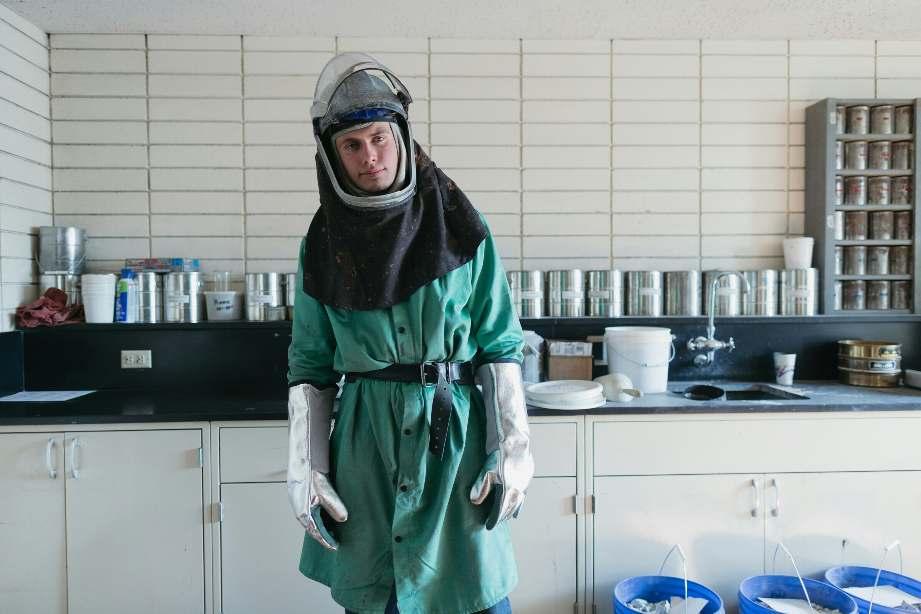

Moreover, when employees are involved in safety initiatives, their commitment to these practices often increases. Participation in safety committees, training sessions, andsafetyauditscultivatesa sense ofownershipamongemployees.Theybegintosee themselves as integral parts of the safety process, which can signi�cantly boost morale andmotivation.
A workforce thatfeelsvaluedandheardismore likelytoadhere tosafetyprotocols andpractices,leadingtoa more vigilantandproactive approachtoworkplace safety.
Training and education are vital components of fostering employee involvement in safety culture. Organizations that invest in comprehensive training programs not only equip employees with the necessary skills to identify and mitigate risks but also demonstrate their commitmenttoemployee well-being
Regular training sessions create opportunities for employees to engage with safety topics,discusstheir concerns,andlearnbestpracticescollaboratively.Thiscontinuous educationreinforcesthe idea thatsafetyisanongoing processrather thana one-time effort,further embeddingsafetyintothe organizational culture.
Lastly, recognizing and rewarding employee contributions to safety can signi�cantly enhance involvement. Celebrating achievements, whether through formal recognition programs or informal acknowledgments, reinforces positive behaviors and encouragescontinuousparticipation.
When employees see that their efforts to improve safetyare valued, it creates a cycle of engagement where they feel motivated to maintain and enhance safety practices. This recognition not only boosts individual morale but also strengthens the collective commitmenttoa culture ofsafetywithinthe manufacturingenvironment.



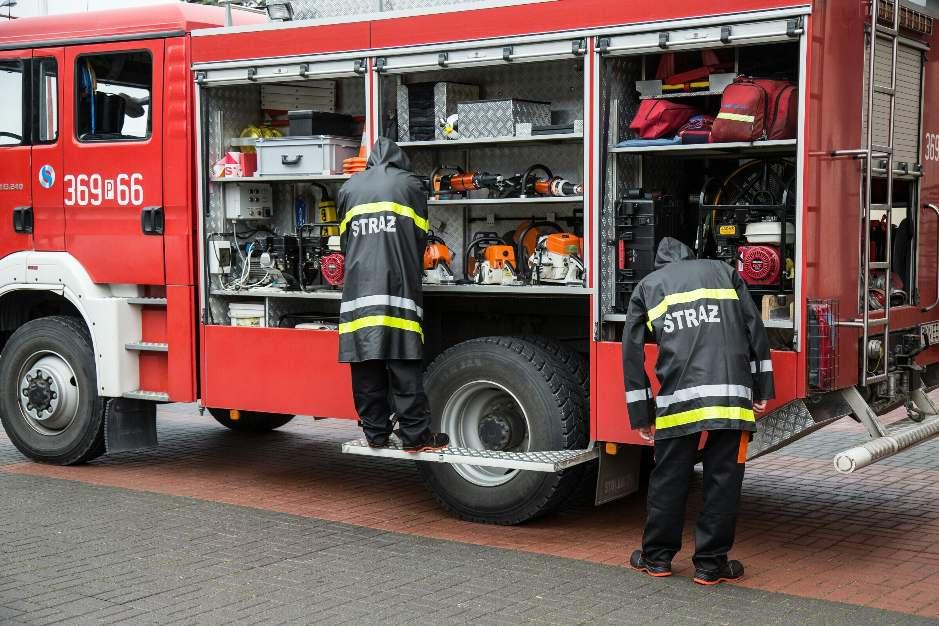
Creating Safety Champions Among Employees
Creating safety champions among employees is a pivotal strategy in enhancing the safety culture within the manufacturing sector. Safety champions are individuals who take on the responsibility of promoting and advocating for safety practices among their peers.
Theyserve asrole models,embodying the principlesof safetyandencouraging others to prioritize safe work behaviors. By empowering employees to become safety champions, organizations can create a proactive environment where safety is a shared responsibility, leading to a signi�cant reduction in workplace incidents and an overall improvementinmorale.

The �rst step in developing safety champions is to foster an environment that values open communication about safety concerns. Employees should feel comfortable discussing potential hazards or unsafe practices without fear of repercussions.
Regular safety meetings and feedback sessions can serve as platforms for employees to voice their opinions and contribute to the conversation. By actively involving employees in safety discussions, organizations can identify areas for improvement and empower individuals to take ownership of their safetyandthatoftheir colleagues.
Training plays a crucial role in equipping employees with the knowledge and skills necessary to become effective safety champions.
Comprehensive safety training programs should not only cover compliance requirements but also emphasize the importance of proactive safety measures.
Workshops and hands-on training sessions can help employees understand the nuances of workplace safety, enabling them to identify hazards and implementcorrective actions.



Additionally, organizations can provide ongoing training opportunities to ensure that employees stay informed about new safety protocols and best practices.
Recognition and rewards are essential components in motivating employees to embrace their roles as safety champions. Organizations should develop a recognition program that highlights the efforts of individuals who demonstrate exceptional commitmenttosafety.

This could include awards, public acknowledgments, or other incentives that reinforce the importance ofsafetycontributions.
By celebrating these efforts, organizations can inspire others to engage in similar behaviors, creating a ripple effect that reinforces a robust safetyculture throughoutthe workplace.
Finally, leadership support is critical in sustaining the momentum of safety champion initiatives. Leaders should actively participate in safety programs and model the behaviors they wish to see intheir employees.
Bydemonstratinga genuine commitmenttosafety, leaders can inspire employees to follow suit. When employees see thatmanagementprioritizes safety,theyare more likelyto adoptsimilar values andpractices.
This alignment between leadership and employee engagement is essential for cultivating a strong manufacturing safety culture, where every individual takes responsibility for their own safety andthatoftheir coworkers.







Encouraging Open Communication
Encouraging open communication isa cornerstone of fostering a robustsafetyculture within the manufacturing sector. When employees feel empowered to share their thoughts, concerns, and experiences, it not only enhances individual safety but also strengthensthe overall safetyframework ofthe organization.
Open communication facilitates the identi�cation of potential hazards, encourages the reportingofnear misses,andallowsfor feedback onsafetyprotocols.
Establishing channelsfor dialogue ensuresthatsafetyconcernsare notjustheardbut activelyaddressed,creatinga proactive environmentwhere safetyisprioritized.


To cultivate an atmosphere of open communication, leadership must demonstrate a commitment to listening and valuing employee input. This can be achieved through regular safetymeetings, suggestion boxes, and anonymousreporting systems. Leaders should encourage employees to voice their concerns without fear of retaliation or judgment.
When employees see that their feedback leads to tangible changes, it reinforces the beliefthattheir contributionsare vital tothe organization'ssafetyculture.
This reciprocal relationship between management and employees is crucial for creatinganengagedworkforce thatprioritizessafety.
Training plays a signi�cant role in encouraging open communication. Employees should receive guidance on effective communication techniques, including active listeningandconstructive feedback.
Workshops that focus on team-building and communication skills can help break down barriers and foster trustamong team members. Additionally, incorporating roleplaying scenarios allows employees to practice addressing safety concerns in a supportive environment. This training not only enhances communication skills but alsoinstillscon�dence inemployeestospeak upaboutsafetyissues.
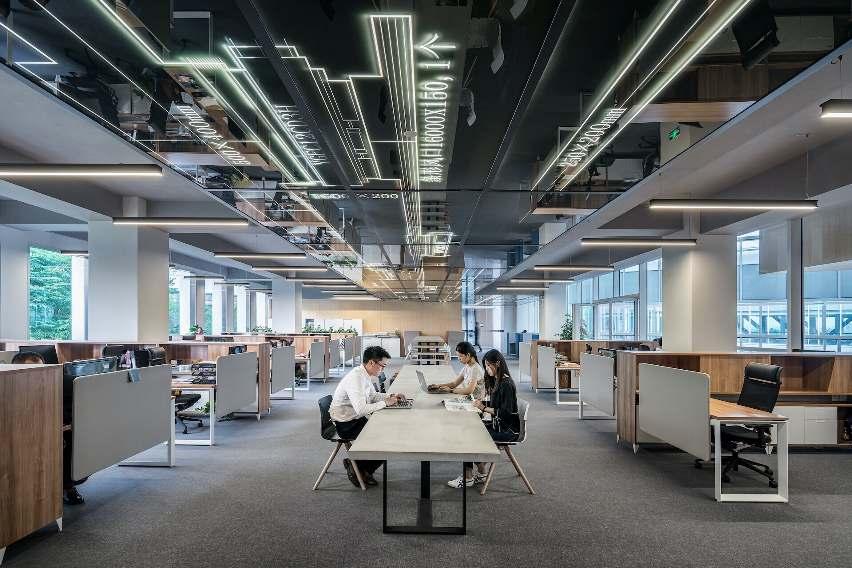

Moreover, open communication should extend beyond formal channels. Informal interactions, such as casual conversations during breaks or team lunches, can be equallyeffective in promoting a safety-orientedmindset. Encouraging a culture where employees feel comfortable discussing safety matters in everyday situations helps to normalize these conversations.
Whensafetybecomesa partofthe routine dialogue withinthe workplace,itreinforces the idea thateveryone playsa role inmaintaininga safe environment.
Finally, recognizing and celebrating open communication efforts is essential for sustaining this culture. Acknowledging employees who report safety concerns or contribute ideas for improvement can motivate others to follow suit. Safety champions within the organization can serve as role models, demonstrating the importance ofclear communication.
Through recognition programs, safety newsletters, or shout-outs during meetings, organizations can highlight the value of open communication, ensuring it remains a fundamental aspect of the manufacturing safety culture. By fostering an environment where dialogue isencouragedandcelebrated,organizationscansigni�cantlyenhance their safetyperformance andoverall employee well-being.


04 Chapter 4: Training and Education for Safety



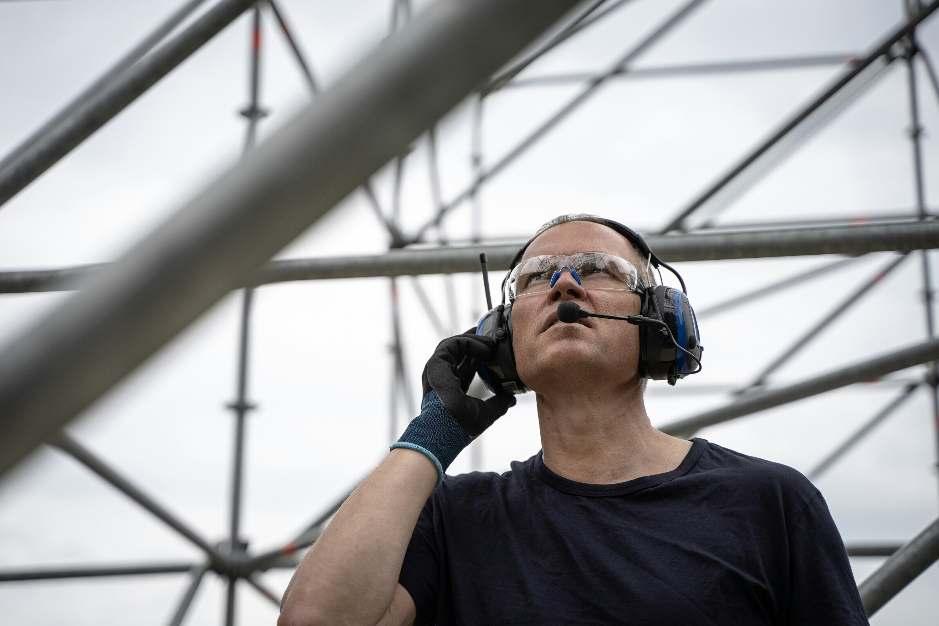
Importance of Continuous Training
Continuous training is a fundamental pillar in fostering a robust safety culture within the manufacturing sector. As employees are regularly exposed to various risks, ongoing education ensures they remain vigilant and knowledgeable about the latest safety protocols and best practices. It is essential for employees to understand that safety is not a one-time training event but an ongoing commitment that requires consistent reinforcement. This approach not only enhances individual awareness but also cultivates a collective responsibilitytowardsmaintaininga safe work environment.
The dynamic nature of the manufacturing industry, characterized by technological advancements and evolving safety standards, necessitates continuous training. New machines, tools, and processes are frequently introduced, each accompanied by speci�c safety instructions. By engaging in regular training sessions, employees can familiarize themselves with these updates, ensuring they are equipped to handle new equipment safely.Thisproactive approachreducesthe likelihoodof accidentsandinjuries,ultimately leadingtoa more ef�cientandproductive workplace.


Moreover, continuous training fosters a culture of open communication and collaboration among employees. As workers participate in training exercises, they have the opportunity to share experiences, discuss challenges, and propose solutions relatedtoworkplace safety.
This collaborative environment not only empowers employees but also encourages them to take ownership of safety practices within their teams. When employees feel heard and valued, their commitment to adhering to safety protocols strengthens, further embeddingsafetyintothe organizational culture.
Investing in continuous training demonstrates the organization's commitment to the well-being of itsworkforce. When employeessee thattheir employer prioritizessafety through regular training initiatives, it builds trust and loyalty. This investment signals that the organization values its employees not just as workers, but as integral members of a safety-conscious community. In turn, this fosters a positive workplace atmosphere where employeesfeel motivatedtoengage insafe practicesandlook out for one another.
Ultimately, the importance of continuous training extends beyond individual safety; it contributes to the overall success and sustainability of the manufacturing organization. A strong safety culture leads to fewer accidents, reduced downtime, and lower insurance costs,all ofwhichpositivelyimpactthe bottom line.
By prioritizing ongoing education and training, manufacturers not only protect their employees but also enhance their operational ef�ciency, thereby solidifying their reputationasleadersinworkplace safetywithinthe industry.

Effective Training Methods
Effective training methods are essential for fostering a robustsafetyculture within the manufacturing sector. One of the most impactful approaches is hands-on training, which allows employees to engage directly with equipment and safety protocols in a controlled environment.
This method not only enhances skill retention but also builds con�dence among employees as they learn to respond to potential hazards. By incorporating real-life scenarios and simulations, organizations can help workers understand the practical application of safety measures, reinforcing the importance of vigilance in their dailytasks.
Another vital trainingmethodisthe use of interactive learning tools, such as elearning modules and virtual reality simulations. These technologies provide employees with engaging, self-paced learning experiences that can be tailored to their speci�c roles within the manufacturingprocess.
Interactive training fosters a deeper understanding of safety procedures and encourages employees to take ownership of their safety responsibilities. Moreover, these tools can offer immediate feedback, allowing workers to identify areas for improvement and reinforcing the correct behaviors in a supportive environment.
Peer-to-peer training is also an effective method for instilling a culture of safety. By leveraging the knowledge and experience of seasoned employees, organizations can create a collaborative learning environment where both new and existing workersbene�t.Thisapproach not only builds relationships among team members but also encourages a sense of accountability, as employees feel a shared responsibility for the safetyoftheir colleagues.
By promoting mentorship and open communication, companies can strengthen their safety culture and ensure that safety practices are consistently upheld throughout the workforce.

Incorporating regular safety meetings and discussions into the training regimen can further enhance employees' understanding of workplace safety. These meetings serve as a platform for employees to voice concerns, share experiences, and discuss best practices relatedtosafety.



By fostering an open dialogue, organizations can identify potential hazards and address them proactively. Additionally, these gatherings promote a continuous learning mindset, enabling employees to stay informed about the latest safety protocols and industry standards, which iscrucial in a constantly evolvingmanufacturingenvironment.
Finally, evaluating training effectiveness is critical to ensure that safety methods are impactful andrelevant.Organizations should regularly assess employees' knowledge and skills through practical assessments, quizzes, and observational evaluations.
Gathering feedback from employees after training sessions allows for continuous improvement of training programs, ensuring they meet the evolving needs of the workforce. By committing to ongoing evaluation and adaptation of training methods, manufacturing companies can create a sustainable safety culture that empowers employees to prioritize safety in every aspectoftheir work.

Evaluating Training Effectiveness
Evaluating training effectiveness is a critical component in fostering a robust workplace safety culture within the manufacturing sector. This process involves assessing how well training programs not only impart knowledge but also translate intopractical safetybehaviorsonthe shop�oor.
A comprehensive evaluation should include several keyperformance indicators, such as incident rates, employee engagement levels, and feedback from participants. By systematically analyzing these factors, organizations can identify strengths and weaknesses in their training efforts, ensuring that safety training meets its intended goals.
One effective method for evaluating training effectiveness is the use of surveys and feedback forms. After each training session, employees can provide insights into their understanding of the material presented and how applicable they �nd it to their daily tasks. This immediate feedback serves as a valuable tool for trainers, enabling them tomake necessaryadjustmentstocontentanddeliverymethods.


Additionally, conducting follow-up surveys weeks or months after training can gauge long-term retention of safety practices and principles, allowing organizations to track the sustainabilityoftrainingoutcomes.
Another essential aspect of evaluation is observing changes in workplace behavior. Organizations should monitor employee adherence to safety protocols and procedures before and after training sessions. This can be accomplished through regular safety audits and inspections, where trained observers assess compliance levels.
A noticeable improvement in safety practices indicates effective training, while a lack of change may highlight the need for revisiting training strategies or enhancing engagement techniques. It is important that these observations are conducted in a supportive environment,encouraging employeesto feel comfortable discussing safety concerns.
In addition to quantitative measures, qualitative assessments are equally important. This can involve conducting focus groups or one-on-one interviews with employees to gather deeper insights into their perceptions of safety training. Such discussions can uncover barriers to implementing learned safety practices and provide suggestions for improvement.
Engaging in open dialogue not only empowers employees but also reinforces a culture of safetywhere their voicesare heardandvalued.Thisparticipatoryapproach can lead to more tailored and relevant training programs that resonate with the workforce.




Ultimately, a continuous cycle of evaluation and improvement is vital for maintaining an effective safety training program. Manufacturing organizations should commit to regularly reviewing training outcomes and making necessary adjustments based on the �ndings.
By embracing this dynamic evaluation process, companies can not only bolster their safety culture but also inspire a collective commitment to safety among all employees. A proactive approach to evaluating training effectiveness ensures that safetyremainsa cornerstone of the manufacturing environment,leading to enhanced productivityanda reductioninworkplace incidents.



05 Chapter 5: Identifying and Assessing Risks

Common Hazards in Manufacturing
Manufacturing environmentspresentvarioushazardsthatcansigni�cantlyimpactthe safety and well-being of employees. One of the most common hazards is the presence of heavy machinery. Equipment such as forklifts, lathes, and conveyor belts canpose seriousrisksifnothandledproperly.
Employees must be aware of their surroundings and adhere to safety protocols, including the use of personal protective equipment (PPE) like hard hats, gloves, and safety goggles. Regular training sessions on equipment operation and safety proceduresare essential tominimize accidentsandinjuriesrelatedtomachinery.
Another prevalent hazard in manufacturing is the risk of slips, trips, and falls. These incidents can occur due to wet �oors, cluttered workspaces, or uneven surfaces. It is crucial for employees to maintain clean and organized work areas to reduce the likelihoodofsuchaccidents.
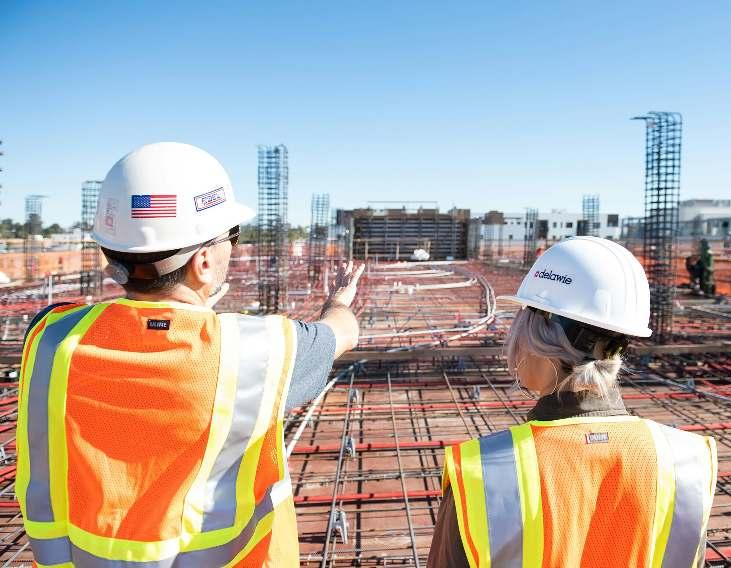

Regular inspections and maintenance of �ooring and walkways can also help identify potential hazards before they lead to injuries. Encouraging a culture of reporting hazards immediately can empower employees to take an active role in maintaining workplace safety.
Chemical exposure is a signi�cant concern in many manufacturing settings. Employees may work with hazardous materials, including solvents, acids, and other chemicals that can pose health risks if inhaled or absorbed through the skin. To mitigate these dangers, proper labeling of all chemicals, comprehensive safety data sheets,andadequate ventilationsystemsare necessary.
Training employeesonthe correcthandling,storage,anddisposal of chemicalsisvital in fostering a safe work environment. Employees should also be encouraged to use appropriate PPEwhendealingwithpotentiallyharmful substances.
Ergonomic hazards are another critical aspect of manufacturing safety. Repetitive motions, awkward postures, and manual handling of heavy objects can lead to musculoskeletal disorders over time. Employers should invest in ergonomic assessmentsandprovide toolsor equipmentdesignedto reduce strainonemployees. Implementing regular breaks and promoting stretching exercises can also help mitigate the risks associated with repetitive tasks. By fostering an environment that prioritizesergonomic practices,manufacturerscanenhance employee well-beingand productivity.
Finally, electrical hazards are a signi�cant risk in many manufacturing facilities. Employees may encounter exposed wires, faulty equipment, or improper grounding, all of whichcanleadto seriousaccidents.Itisessential thatall electrical systemsare regularlyinspectedandmaintainedbyquali�edpersonnel.Employeesshouldreceive training on recognizing electrical hazards and understanding the importance of adheringtolockout/tagoutproceduresduringmaintenance work.
By promoting awareness and adherence to electrical safety protocols, manufacturers cansigni�cantlyreduce the risk ofelectrical accidentsinthe workplace.




Risk Assessment Techniques
Risk assessment techniques are essential tools for manufacturing employees aiming to enhance workplace safety culture. By systematically identifying, analyzing, and prioritizing risks, these techniques empower workers to recognize potential hazards andimplementappropriate controls.
Understanding various risk assessment methodologies can signi�cantly improve the overall safety environment within manufacturing facilities. This knowledge not only protects employees but also fosters a proactive safety culture that encourages collaborationandsharedresponsibilityfor safetyamongall team members.


One widely used risk assessment technique is the Hazard Identi�cation and Risk Assessment (HIRA) process. This approach involves identifying potential hazards associated with speci�c processes or tasks, followed by evaluating the risks linked to these hazards. Employees can participate in HIRA sessions to share their insights and experiences,ensuring thatpotential risksare thoroughlyexamined.Byengaging inthis collaborative process, employees not only contribute to their own safety but also enhance their understandingofthe safetyculture withintheir workplace.
Another effective technique is the Job Safety Analysis (JSA), which breaks down individual tasks into their components to identify speci�c risks at each stage. This method encourages employees to think critically about their work processes and consider the implicationsof each step on their safety. Byconducting JSAs, workerscan develop safer work practices and foster an environment where safety concerns are openly discussed. Moreover, JSAs can serve as valuable training tools for new employees,helpingthem assimilate intothe workplace safetyculture from the outset.
The use of Risk Matrixisanother technique thatcanprovide a visual representationof risks and their severity. This tool categorizes risks based on their likelihood of occurrence and potential impact, allowing employees to prioritize which risks need immediate attention. By incorporating a Risk Matrix into regular safety meetings, teams can engage in informed discussions on risk management and decision-making. This technique not only enhances the understanding of risks but also promotes a culture ofcontinuousimprovementinsafetypractices.
Finally, regular audits and inspections play a crucial role in reinforcing risk assessment techniques. By systematically reviewing safety protocols and compliance with established safety standards, employees can identify areas for improvement and celebrate successes. These audits foster an environment of accountability and transparency, encouraging employees to take ownership of safety practices. As employees become more involved in the auditing process, they contribute to a stronger safety culture, ultimately leading to a safer workplace for everyone in the manufacturingsector.

Implementing Preventive Measures
Implementing preventive measures is a fundamental aspect of fostering a robust safety culture in the manufacturing sector. Preventive measures are proactive strategies designed to identify and mitigate potential hazards before they can lead to accidents or injuries. This approach emphasizes the importance of recognizing risks earlyandaddressingthem effectively.Byincorporatingpreventive measuresintodaily operations, employees contribute to a safer work environment, ensuring their own well-beingandthatoftheir colleagues.
One of the key elements of implementing preventive measures is conducting regular risk assessments. These assessments involve evaluating the workplace for potential hazards, including equipment, processes, and environmental conditions. Employees should be encouraged to participate in these assessments, as they possess valuable insights into the speci�c risks associated with their tasks. By fostering an open dialogue about safety concerns, organizations can create a more inclusive atmosphere where everyone feelsresponsible for maintainingsafetystandards.
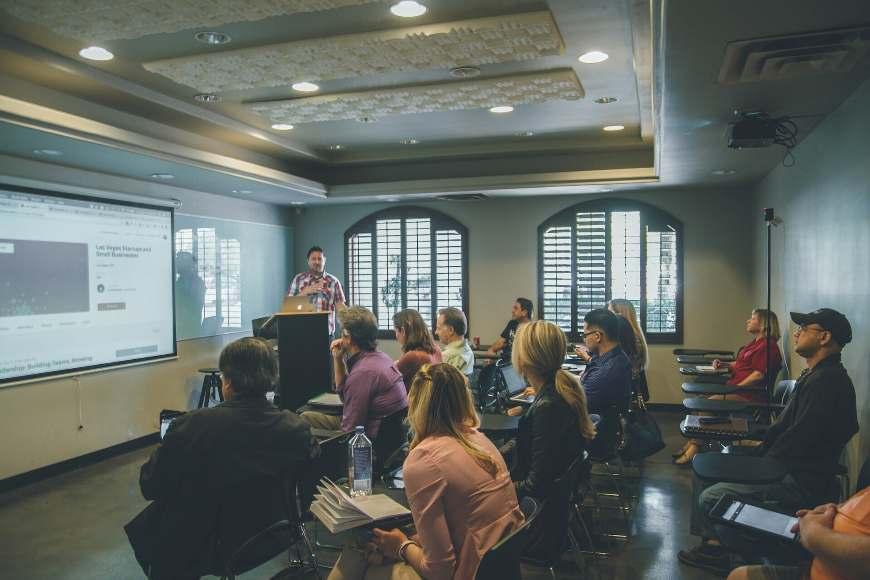
Training and education play a crucial role in the successful implementation of preventive measures. Employees should receive ongoing training on safety protocols, proper equipment usage, and emergency response procedures. This training should not be a one-time event but rather an ongoing process that evolves with changes in technology and practices. Engaging employees through workshops, simulations, and hands-on practice can enhance their understanding and retention of safety concepts, making them more likely to apply these principles in their daily routines.
In addition to training, creating a system for reporting and addressing safety concerns is essential. Employees must feel empowered to communicate potential hazards without fear of retribution. Implementing anonymous reporting systems can encourage open communication and ensure that all safety issues are taken seriously. Once a reportismade,itisvital for management to respond promptly and effectively, demonstrating a commitment to employee safety and reinforcing the importance ofpreventive measures.



Finally, recognizing and rewarding safe practices can reinforce the culture of safety within the organization. Celebrating individuals or teams that successfully implement preventive measures or demonstrate exemplary safetybehavior can motivate others to follow suit. This recognition helps to create a positive feedback loop,where employees feel valued for their contributions to workplace safety. By consistently promoting and implementing preventive measures, manufacturing companies can cultivate an environment where safety is paramount, ultimately leading to enhanced productivity and employee morale.


06 Chapter 6: Promoting Safe Work Practices

Developing Standard Operating Procedures
Developing Standard Operating Procedures (SOPs) is a critical step in establishing a robustsafetyculture within the manufacturing sector. SOPs serve as the backbone of operational consistency and safety compliance, providing clear guidelinesfor employeestofollow.
When employees understand the procedures they are expected to adhere to, it minimizes the risk of accidents and enhances overall workplace safety. A well-crafted SOP not only outlines the steps to complete a task but also integrates safety considerations, ensuring that employees are equipped with the knowledge needed to perform their dutiessafely.
To create effective SOPs, it is essential to involve employees from various levels of the organization. Engaging frontline workers in the development process ensures that the procedures re�ect realworldpracticesandchallenges.
These employees possess valuable insights into the tasks they perform daily, making their input crucial for identifying potential hazards and determining the most ef�cient and safe methods of operation. This collaborative approach not only fosters a sense of ownership among employees but also reinforces the importance of safety as a collective responsibility.
When writing SOPs, clarity and simplicity should be prioritized. The language used must be straightforward, avoiding jargon that could create confusion among workers. Each SOP should be structured logically, with clear headings and step-by-step instructions that guide employees through the process.
Including visual aids,suchasdiagrams or photographs, can further enhance understanding and retention of the procedures. It is important to remember that the goal is to create documents that are easily accessible and comprehensible to all employees, regardlessoftheir experience level.


Once SOPshave beendeveloped,trainingiskeyto ensuringthatall employeesare familiar withthe procedures.A comprehensive trainingprogram shouldbe implementedtoeducate employees aboutthe SOPsrelevanttotheir roles.Thistraining shouldnotbe a one-time event;rather,itshould be anongoingprocessthatincludesrefreshers andupdatesasproceduresevolve.Byregularly reinforcingSOPsthroughtraining,organizations canhelpembeda culture ofsafety,where employeesare continuouslyaware ofbest practicesandsafetyprotocols.
Finally, SOPs should be regularly reviewed and updated to re�ect changes in processes, equipment, or regulations. A dynamic safety culture is one that adapts to new challenges and incorporates lessons learned from incidents or near misses. Establishing a review schedule for SOPs ensures that they remain relevant and effective.
Employees should be encouraged to provide feedback on existing procedures, allowing for continuous improvement. By fostering an environment where safety is prioritized and procedures are regularly re�ned, organizations can cultivate a strong safety culture that protects employees and enhances overall operational ef�ciency.





Best Practices for Safe Equipment Use
In the manufacturing sector, safety is paramount, and adhering to best practices for safe equipment use is essential for fostering a culture of safety. Employees must prioritize understanding the equipment they operate, including its functions, limitations, and potential hazards.
Comprehensive training programs should be established to ensure that all employees are aware of operational protocols and safety measures. Regular safety drills and refreshers can reinforce this knowledge and empower employees to act con�dently and responsibly whenusingmachinery.
Proper personal protective equipment (PPE) is a critical component of safe equipment use. Employees should be equipped with the appropriate PPE tailored to their speci�c tasks and the equipment being utilized. This includes gloves, helmets, goggles, and hearing protection,amongothers.
Employers must ensure that this equipment is regularly inspected and maintained, and employees should be trained on its correct usage.


Establishing a culture where employees feel comfortable reporting issues with PPE canhelpmaintainhighsafetystandardsandpreventinjuries.
Adhering to manufacturer guidelines is another best practice that cannot be overlooked. Each piece of equipment comes with speci�c instructions and safety protocolsdesignedtopreventaccidentsandinjuries.
Employees should be encouraged to familiarize themselves with these guidelines and consult them whenever necessary. Regular assessments of equipment performance and safety features should be conducted to ensure compliance with these standards. This practice notonlyenhances safetybutalso extends the lifespan of the equipment, contributingtooverall operational ef�ciency.
Additionally, communication plays a vital role in promoting safe equipment use. Establishing open lines of communication among team members can signi�cantly reduce the risk of accidents. Employees should feel empowered to voice safety concerns,reportnear misses,andsuggestimprovements.
Regular safety meetings can serve as platforms for sharing insights and discussing safety challenges. By fostering an environment where safety is openly discussed, organizationscancultivate a proactive approachtorisk management.
Finally, continuous improvement in safety practices should be a core principle in the workplace. Organizations should regularly review and update safety protocols based onfeedback from employeesandindustrybestpractices.
Implementing a system for monitoring safety performance and identifying areas for improvement can help reinforce a culture of safety. When employees see that their safety concerns are taken seriously and that their feedback leads to actionable changes, it strengthens their commitment to safe equipment use and overall workplace safety.




Housekeeping and Safety
Housekeepingplaysa vital role inmaintaininga safe andproductive workplace within the manufacturing sector. A clean and organized environment not only enhances operational ef�ciencybutalsopreventsaccidentsandinjuries.
Employees should understand that effective housekeeping practices, such as keeping workspaces tidy, properly storing tools and materials, and promptly cleaning up spills, contribute signi�cantly to overall safety. By fostering a culture of cleanliness, employees not only protect themselves but also their colleagues, promoting an atmosphere where safetyisprioritizedandrespected.
The relationship between housekeeping and safety is evident in the prevention of workplace hazards. Cluttered work areas can obscure hazards, making it dif�cult for employees to navigate their surroundings safely. Obstructions in walkways and exits canimpede emergencyresponsesduringcritical situations.


Therefore, implementing a routine for daily housekeeping tasks is essential. Employees should be encouraged to take personal responsibility for their work areas and to participate in regular safety audits that assess housekeeping practices. This proactive approach helps identify potential hazardsbefore theyleadtoaccidents.
Another essential aspect of housekeeping is the proper disposal of waste and hazardous materials.Employeesmustbe trainedonthe correct procedures for handling and disposing of different types of waste, including chemicals and sharp objects. Utilizing designated containers and adhering to labeling requirementsare crucial stepsin minimizing risks associated with hazardous materials.
Additionally, maintaining Material Safety Data Sheets (MSDS) for all chemicals in the workplace ensures that employees have access to vital information regarding safe handling and emergency measures, reinforcingthe overall culture ofsafety.
Training and communication are key components in cultivating a strong safety culture related to housekeeping. Regular workshops and training sessions can equip employees with the knowledge and skills needed to maintain a clean workspace effectively.
Furthermore, establishing open lines of communication allows employees to voice concerns about safety and housekeeping issues. Encouraging feedback and suggestions fosters a sense of ownership and accountability among employees, making them active participants in the safety culture rather than passive observers.
Ultimately, the responsibility for maintaining a safe and organized workplace lies with every employee. By embracing good housekeeping practices and prioritizing safety, employees contribute to a culture that values health andwell-being.
A commitment to cleanliness not only protects individuals but also enhances the overall productivity and morale of the workforce. When everyone understands their role in maintaining a safe environment, the manufacturing sector can thrive, demonstrating that safety is trulya sharedresponsibility.



07 Chapter 7: Reporting and Investigating Incidents
Importance of Incident Reporting
Incident reporting is a fundamental component of a robust safety culture in the manufacturing sector. It serves as a critical mechanism for identifying hazards, mitigating risks, and preventing future occurrences.
This openness cultivates trust between employees and management, reinforcing the idea thatsafetyisa sharedpriority. When employees report incidents, near misses,or unsafe conditions,theyprovide valuable data that can be analyzed to uncover underlying issues within the workplace. This proactive approach not only enhances individual safety but also fosters a collective responsibility among team members to maintain a safe workingenvironment.



A strong culture of incident reporting encourages transparency and open communication among employees. When workers feel comfortable reporting incidents without fear of reprisal, they contribute to a more comprehensive understandingofsafetychallenges.
Inturn, thistrustcanleadto increased participationinsafetyprograms,where employees are more likely to engage in discussions, share insights, and propose solutions to improve safety practices.
Moreover, incident reporting plays a pivotal role in regulatory compliance and organizational accountability. Manufacturing facilities are subject to various safety regulations that mandate the documentation of incidents and the implementation of corrective actions.

Byadhering tothese standards,organizationsnotonlyprotecttheir workforce butalso avoid potential legal repercussions and �nancial penalties. A culture that prioritizes incident reporting demonstrates a commitment to compliance, which can enhance the company’sreputationandfoster stronger relationshipswithregulatorybodies.
The analysisofreportedincidentsallowsorganizationstoidentifytrendsandrecurring issues that may otherwise go unnoticed. By systematically reviewing incidents, safety teams can pinpoint speci�c areas for improvement, whether it be equipment maintenance,employee training,or procedural modi�cations.
This data-driven approach ensures that safety initiatives are targeted and effective, ultimately leading to a reduction in accidents and injuries. Employees bene�t directly from these improvements, as safer working conditions enhance their overall wellbeingandjobsatisfaction.
In conclusion, the importance of incident reporting in the manufacturing sector cannot be overstated. It is an essential tool for fostering a culture of safety that empowers employees to take an active role in protecting themselves and their colleagues.
By promoting a transparent and accountable reporting process, organizations can create an environment where safety is ingrained in daily operations, leading to sustainable improvementsinworkplace safetyculture.
Embracing incident reporting not only safeguards employees but also drives continuous improvement, ensuring that the manufacturing sector remains a safe and productive environmentfor all.







Steps in Incident Investigation
The process of incident investigation is a crucial aspect of maintaining a robust safety culture within the manufacturing sector. To effectively address and learn from incidents, it is essential to follow a systematic approach that not only identi�es the rootcausesbutalsofostersanenvironmentofcontinuousimprovement.
The �rst step involves securing the incident scene to ensure that evidence is preserved and any ongoing risks are mitigated. This may include cordoning off the area, providing assistance to any injured parties, and ensuring that no further incidentsoccur.
By prioritizing safety at the onset of an investigation, employees demonstrate a commitmenttotheir well-beingandthatoftheir colleagues.


Once the scene is secured, gathering information becomes the next pivotal step. This involves collecting statements from witnesses, examining physical evidence, and reviewing relevant documentation such as maintenance logs, training records, and safety protocols. It is vital to approach this phase with an open mind, allowing all perspectives to be heard without assigningblame.
By conducting thorough interviews and encouraging honest reporting, organizations can uncover valuable insights into the circumstances surrounding the incident. This comprehensive data collection lays the groundwork for a more effective analysis ofwhatwentwrong.
The analysis phase is where the core of the investigation unfolds. Utilizing tools such as the "5 Whys" technique or �shbone diagrams can help teams dissect the incident and identify underlyingissues.
It is important to distinguish between immediate causes, such as equipment failure or human error, and systemic issues like inadequate training or poor communicationpractices.
By addressing both levels, manufacturing employees can develop a clearer understanding of the factors that contributed to the incident.Thisanalysisnotonlyhelpsin preventing similar occurrences in the future but also promotes a culture of accountabilityandlearning.
Following the analysis, the next step is to develop actionable recommendations. These should be speci�c, measurable, and tailored to address the root causes identi�ed in the investigation.For example,ifa lack of training was determined to be a contributing factor, implementing a comprehensive training program may be necessary.
Additionally, organizations should consider establishing safety committeesor regular safetymeetings to ensure thatemployeesare engaged indiscussionsaboutworkplace safety.
By involving employees in the development of solutions, organizations can cultivate a sense of ownership and responsibility towards safetypractices.


The �nal step in the incident investigation process is to communicate �ndings and recommendations toall employeesandstakeholders.
Transparency is key in reinforcing a culture of safety, as it demonstrates that the organization values input and is committed to continuous improvement.
Sharing lessons learned from incidents can help prevent future occurrences and foster a proactive approachtosafety.
By creating an open dialogue about safety concerns and encouraging ongoing reporting, manufacturing employees can contribute to a workplace where safety is prioritized and ingrainedinthe culture.
This collaborative effort helps to establish a resilient safety culture that not only protects employees but also enhances overall organizational performance.



Learning from Mistakes
Learning from mistakes is a fundamental aspectoffosteringa robustsafetyculture within the manufacturing sector. Mistakes, while often viewed negatively, can serve as powerful learning opportunities that enhance workplace safety.
By acknowledging and analyzing errors, employees can develop a deeper understanding of safety protocols and the potential consequencesof neglecting them.
This subchapter will explore how embracing mistakes can lead to improved safety practices, increased awareness, and a more proactive approachtorisk management.
In the manufacturing environment, mistakes can arise from various sources such as miscommunication, inadequate training, or even faulty equipment. When an error occurs, it is essential to investigate the underlying causes rather thanmerelyassigningblame.



A culture that encourages open discussion about mistakes fosters an environment where employees feel safe to report incidents and near misses. This transparency not only helps to identify systemic issues but also empowers workers to take ownership of their actions and learn from the experiencesofothers.
One effective strategy for learning from mistakes is implementing a formal review process. This can include regular safety meetings where employees are encouraged to share their experiences and the lessons learnedfrom speci�c incidents.
Byanalyzingthese eventscollectively, the team canidentifypatternsand developpreventive measuresthat addressthe rootcausesoferrors.
Documentingthese discussionsandthe resultingactionplanscreatesa valuable resource for ongoingtrainingand reinforcesthe importance ofcontinuous improvementinsafetypractices.


Moreover,recognizingandrewarding employeeswhodemonstrate accountabilityandinitiative inlearning from mistakescanfurther reinforce a positive safetyculture.
Thisproactive approachnotonly enhancesindividual awarenessand responsibilitybutalsocontributes signi�cantlytothe overall safetyculture ofthe organization,ensuringa safer workplace for all. Whenemployeessee thattheir contributionstosafetydiscussionsare valued,theyare more likelytoengage activelyinthe process.Thisrecognition notonlyboostsmorale butalso encouragesotherstoparticipate in similar dialogues,creatinga cycle of learningthatultimatelyenhances workplace safetyfor everyone.
Inconclusion,learningfrom mistakesis notmerelyaboutavoidingfuture errors, butaboutcultivatinga culture ofsafety thatprioritizesgrowthandimprovement. Byfosteringanenvironmentwhere mistakesare openlydiscussedand analyzed,manufacturingemployeescan transform potential setbacksinto opportunitiesfor advancement.


08 Chapter 8: Recognizing and Rewarding Safety




Importance of Recognition Programs
Recognition programsplaya pivotal role in fostering a robustsafetyculture within the manufacturing sector. These initiatives serve to acknowledge and reward employees who actively engage in safe practices and contribute to the overall safety of the workplace.
By highlighting their efforts, organizations can create an environment where safety becomes a shared value among all employees. This not only enhances individual accountability but also reinforces the collective commitment to maintaining a safe work environment.
One of the primary bene�ts of recognition programs is their ability to motivate employees. When workers see their peers being rewarded for their commitment to safety, they are more likely to adopt similar behaviors. This can lead to increased participation in safety training sessions, adherence to safety protocols, and proactive identi�cationofpotential hazards.


By fostering this sense of motivation, recognition programs can signi�cantly reduce the incidence of workplace accidents and incidents, ultimately contributing to a safer manufacturingenvironment.
Additionally, recognition programs help to build a sense of community among employees. When safety achievements are celebrated, it encourages teamwork and collaboration.Employeesare more likelytosupportone another intheir safetyefforts, share best practices, and engage in open discussions about safety concerns. This collaborative approachnotonlyenhancesindividual performance butalso nurturesa culture where safety is prioritized and collectively owned by everyone in the organization.
Moreover, recognition programs can serve as powerful tools for reinforcing organizational values. When safety is consistently acknowledged and rewarded, it sends a clear message that it is a top priority for the organization. This alignment betweenrecognitionandorganizational valueshelpstoinstill a deeper understanding of the importance of safety among employees. As workers internalize these values, they become more vigilant and proactive in maintaining a safe workplace, ultimately leadingtoa more resilientsafetyculture.
In conclusion, the importance of recognition programs in the manufacturing sector cannot be overstated. They not only motivate employees to prioritize safety but also foster teamwork, reinforce organizational values, and ultimately contribute to a more effective safety culture. By implementing and promoting these programs, organizationscaninspire their workforce totake ownershipofsafetypractices,leading toa healthier andmore productive manufacturingenvironment.

Types of Safety Incentives
Safetyincentivesplaya crucial role infostering a culture of safety within the manufacturing sector. By understanding the different types of safety incentives available, employees can appreciate how these initiativescontribute toa safer workingenvironment.
Safety incentives can generally be categorized into tangible rewards, recognition programs, training opportunities, and behavioral incentives. Each type plays a speci�c role in promoting safety awareness and encouragingproactive participationamongemployees
Tangible rewards include �nancial bonuses, gift cards, or other material bene�ts offered to employees who demonstrate safe practices or contribute to safety improvements. These incentives not only motivate individuals but also create a competitive spirit among teams.
When employees see a direct correlation between their safe behaviors and tangible rewards, they are more likelyto prioritize safetyin their dailytasks. Itis essential for organizations to ensure that the criteria for receiving these rewards are clear and achievable, fostering an environmentwhere safetyiscontinuallyemphasized.
Recognition programs are another effective type of safety incentive that focuses on celebrating individual or team achievements in safety. This can range from employee of the month awards to public acknowledgmentduringcompanymeetings.





Recognition serves to validate the efforts of those who consistently adhere to safety protocols and encourages otherstofollowsuit.Whenemployeesfeel appreciatedfor their commitment to safety, it builds morale and reinforces the importance of maintaining a safe workplace.
Training opportunities also serve as a valuable safety incentive. By investing in safety training programs, companies demonstrate their commitment to employee well-being and skill development. Such training not only equips employees with the knowledge to identify hazards but also empowers them to take ownership of their safety andthe safetyoftheir colleagues.
Additionally, providing access to advanced training sessions or certi�cations can enhance employees' professional development, making safety a shared priority acrossthe organization.
Behavioral incentives focus on promoting a positive safety culture through peer in�uence and teamwork. This could involve team-based challenges where groups work together to achieve safety milestones or initiatives that encourage employees to mentor one another in safe practices.
By fostering collaboration and shared responsibility, organizations can cultivate a culture where safety is viewed as a collective goal rather than an individual obligation. Through these various types of safety incentives, manufacturing employees can contribute to a culture of safetythatnotonlyprotectstheir well-being but alsoenhancesoverall workplace productivity.

Celebrating Safety Achievements
Celebrating safetyachievementsisa crucial aspectoffostering a robustsafetyculture within the manufacturing sector. Recognizing the efforts of individuals and teams not only boosts morale but also reinforces the importance of safety in the workplace. When employees see their colleagues acknowledged for their commitment to safety, it creates a ripple effect that encourages others to prioritize safety in their daily tasks. These celebrations serve as a reminder that safety is a shared responsibility and that everycontributioncountstowardcreatinga safer work environment.
One effective way to celebrate safety achievements is through formal recognition programs. These programs can take various forms, such as safety awards, employeeof-the-monthinitiatives,or safetychampionaccolades.
By establishing a clear framework for recognition, companies can highlight outstanding safety practices and behaviors that align with their safety goals. This not only motivates those who receive accolades but also sets a benchmark for others to aspire to, fostering a culture where safety is viewed as a vital element of job performance.
Inadditiontoformal recognition,informal celebrationscanalsoplaya signi�cantrole in promoting safety culture. Team gatherings, safety milestone parties, or even simple shout-outs during meetings can reinforce the message that safety is valued and appreciated.
These informal settingsallowfor camaraderie amongemployeesandcanleadto opendiscussionsaboutsafetypractices,challenges,andsuccesses.Bycreatingan environmentwhere employeesfeel comfortable sharingtheir experiences, organizationscancultivate a proactive approachtosafety.

Moreover, sharing success stories related tosafetyachievementscanbe a powerful tool in celebrating safety culture. Highlighting speci�c incidents where safety protocols were successfully implemented or where quick thinking prevented accidents can inspire others to adoptsimilar practices.
These narratives not only serve to celebrate individual and team efforts but also provide practical examples of how safety can be effectively integrated into daily operations. By making these stories accessible through newsletters, bulletin boards, or digital platforms, organizations can ensure that the message of safety achievement resonates throughout the workforce.
Finally, it is essential to regularly assess and evolve the methods of celebrating safety achievements to keep the momentum going. Gathering employee feedback on recognition programs and celebrations can provide valuable insights into what resonates with the workforce.
Byinvolvingemployeesinthe process, organizationscantailor their celebrations tore�ectthe valuesandpreferencesof their workforce.
This ongoing commitment to recognizing safety achievements will not only sustain enthusiasm for safety initiatives but also reinforce the idea that safety is a continuous journey, where every achievement, no matter howsmall,deservesacknowledgment.



09 Chapter 9: Continuous Improvement in Safety Culture


Measuring Safety Performance
Measuring safety performance is a crucial aspect of fostering a robust safety culture within the manufacturing sector. To effectively assess safety performance, organizations must establish clear metrics that re�ect the ef�cacy of their safety programs.
These metrics can include both leading indicators, such as the number of safety trainingsessionscompletedandsafetyauditsperformed,aswell aslaggingindicators, like the number ofincidents,accidents,or near missesreported.
By understanding and utilizing these indicators, manufacturing employees can gain insight into the strengths and weaknesses of their safety practices, ultimately driving improvementsandreinforcinga commitmenttoa safer workplace.
One effective method of measuring safety performance is through the implementationof regular safetyauditsandinspections.These auditsnotonlyidentify potential hazards but also evaluate the compliance of safety protocols and procedures.




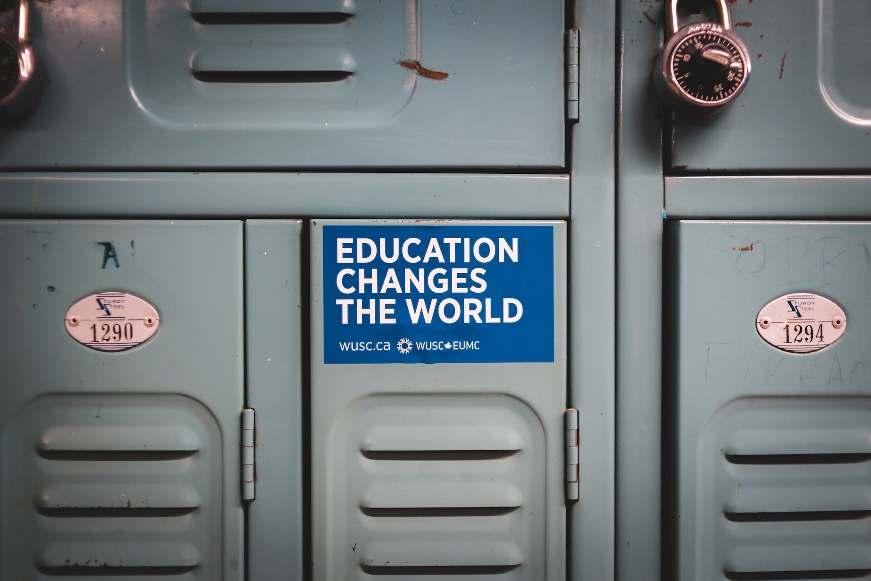
Employeesshouldbe encouragedtoparticipate inthese audits,astheir �rsthand experience canprovide valuable insightsintothe practical applicationofsafety measures.Whenemployeesactivelyengage inthe auditprocess,theynotonly contribute toa safer environmentbutalsocultivate a sense ofownershipand responsibilitytowardssafety.Thisinvolvementisvital increatinga culture where safetyisprioritizedandvaluedbyall.
Trainingandeducationare essential componentsofa successful safetyperformance measurementstrategy.Regular trainingsessionshelpemployeesstayinformedabout the latestsafetypracticesandprotocols,while alsoreinforcingthe importance of safetyintheir dailytasks.Evaluatingthe effectivenessofthese trainingprogramscan be accomplishedthroughassessments,feedback surveys,andobservationof behavior changesinthe workplace.Byanalyzingthe data collectedfrom these evaluations,organizationscantailor their traininginitiativestoaddressspeci�c safety concernsandensure thatemployeesare well-equippedtohandle potential risks.


Another important aspect of measuring safety performance is the establishment of safety committees or teams comprised of employees from various levels of the organization. These teams can serve as a platform for discussing safety concerns, sharing best practices, and developing strategies to enhance safety culture. By including employees in these discussions, organizations can leverage diverse perspectivesandfoster a collaborative environmentthatprioritizessafety.
Regular meetings and open communication within these teams can lead to the identi�cation of trends or recurring issues that may require immediate attention, ultimatelydrivingcontinuousimprovementinsafetyperformance.
Lastly, recognizing and rewarding safe behaviorsisan effective strategyfor measuring and promoting safety performance. Acknowledging employees who consistently adhere to safety protocols and contribute to a safe working environment reinforces the importance ofsafetyinthe organizational culture.
Recognition can come in various forms, such as verbal praise, safety awards, or incentive programs. By celebrating these achievements, manufacturing organizations can inspire others to adopt similar behaviors, leading to a collective commitment to safetyanda thrivingworkplace safetyculture.
Through these measurement strategies, organizations can create an environment where safetyisdeeplyingrainedinthe dailyoperationsandmindsetofall employees.

Implementing Feedback Loops
Implementing feedback loops is essential in cultivating a safety culture within the manufacturing sector.Feedback loopsare systematic processesthat allow for the continuous gathering, analysis, and application of safety-related information. By establishing these loops, organizations can create a mechanism for employees to share their insights and experiences regarding safety practices. This is not only a way to enhance safety protocols but also a means to reinforce the idea that each employee playsa critical role inmaintaininga safe workplace.
The �rst step in implementing effective feedback loops is to create an environment where employees feel comfortable sharing their observations and concerns. This can be achieved by promoting open communication and encouraging participation in safety discussions. Regular safety meetings, suggestion boxes, and anonymous surveys can facilitate this process. When employees know their voices are heard and valued, they are more likely to contribute actively to safety initiatives, leading to a more robustsafetyculture.
Once feedback iscollected,itiscrucial toanalyze the informationsystematically.Thisanalysisshould focusonidentifyingtrendsandrecurringissuesthat maysuggestpotential hazardsor areasfor improvement.





By using data analytics tools or safety management software, organizations can track safety performance over time and pinpoint speci�c areas that require attention. This data-driven approach not only enhances the effectiveness of safety measures but also demonstrates to employees that their feedback directlyin�uencessafetypractices.
After analyzing the feedback, the next step is to act on the �ndings. Implementing changes based on employee input shows a commitment to safety and reinforces the importance of feedback loops. Whether it involves revising safety protocols, providing additional training, or investing in new safety equipment, these actions signal to employees that their contributions are taken seriously. Moreover, it fosters a culture of accountability, where everyone is responsible for the overall safetyofthe workplace.
Finally, it is vital to close the feedback loop by communicating the changes made in response to employee insights. This can be done through newsletters, team meetings, or digital platforms. By keeping everyone informed about the actions taken, organizations not only validate the feedback process butalsomotivate employeestocontinue participating. A well-implementedfeedback loopcreatesa dynamic safety culture where continuous improvement is the norm, ultimately leading to a safer manufacturing environmentfor all.


Adapting and Evolving Safety Practices
Adapting and evolving safety practices is essential in the manufacturing sector, where the landscape of potential hazards is continuously changing. As new technologies, materials, and processes are introduced, the methods for ensuring safety must also evolve.
Itiscrucial for manufacturing employeesto engage inongoing educationaboutsafety practices and to remain aware of the latest developments in safety protocols. This proactive approachnotonlyprotectsemployeesbutalsocontributestoa more robust workplace safetyculture.
One of the key components of adapting safety practices is fostering open communication within the workplace. Employees should feel empowered to report safety concerns and suggest improvements without fear of reprisal. This can be achievedbyinstituting regular safetymeetingsandencouraging dialogue aboutsafety issues.
Whenemployeesare encouragedtoshare their insights,itleadstoa more informed workforce capable ofidentifyingpotential risksandimplementingeffective safety measures.A culture where safetyisopenlydiscussedcansigni�cantlyenhance the overall safetyclimate inmanufacturingsettings.
Training plays a vital role in the evolution of safety practices. Continuous training programs that incorporate new technologies and methods are essential to keeping employees informed and prepared. These programs should not only cover compliance with existing regulations but also include scenarios that employees may encounter onthe job.
By incorporating real-life examples and hands-on training, employees can better understand the importance of safety practices and how to adapt to changing circumstances. Ongoing education ensures that everyone is equipped with the latest knowledge andskillsneededfor a safe workingenvironment.

Another important aspect of evolving safety practices is the integration of technology. In today’s manufacturing environments, advanced technologies such as automation, robotics, and data analytics can enhance safety measures signi�cantly.
These tools can help identify hazards, monitor safetycompliance,andimprove incidentresponse times. Employees should be trained to use these technologies effectively, ensuring they complement traditional safety practices. By embracing technological advancements, manufacturing employees can contribute to a more dynamic andresponsive safetyculture.
Finally, it is essential to recognize that adapting safety practices is not a one-time effort but an ongoing commitment. Regular assessments of safety protocols and practices should be conducted to ensure they remain relevant and effective.
Organizations should establish mechanisms for feedback from employees regarding the effectiveness of safety measures and any areas that require improvement. By fostering a culture that values continuous improvement in safety practices, manufacturing employees can collectively contribute to a safer workplace, ultimately leading to enhanced productivity, morale,andjobsatisfaction.





10 Chapter 10: Building a Sustainable Safety Culture




Long-Term Strategies for Safety
Long-term strategies for safety in the manufacturing sector are essential for fostering a sustainable safety culture that empowers employees and minimizes risks. Establishing a strong foundation requires ongoing commitment and proactive measuresthatengage all levelsofthe organization
It is crucial to integrate safety into every aspect of the manufacturing process, from the design of work�ows to the selection of equipment and materials. This comprehensive approachnotonlyprotectsemployeesbutalso enhancesproductivity andoperational ef�ciency.
One of the key components of a long-term safety strategy is continuous training and education. Regular safety training sessions should be implemented to keep employees informed about the latest safety protocols, equipment handling techniques, and emergency procedures. These educational initiatives should not be one-time events but rather an ongoing process that evolves with changes in technologyandregulations.


Encouragingemployeestoparticipate insafetyworkshopsandcerti�cationprograms canfurther enhance their skillsandknowledge,demonstratingthe organization's commitmenttotheir well-being.
Another vital aspect of developing a long-term safety culture is the establishment of clear communication channels. Open lines of communication between management and employees foster an environment where safety concerns can be addressed promptly. Regular safety meetings, feedback sessions, and anonymous reporting systems can all contribute to a culture of transparency. When employees feel empowered to voice their concerns and suggest improvements, it not only enhances safetybutalsobuildstrustandcollaborationamongteam members.
Incorporating advanced technology and data analysis into safety practices can signi�cantly enhance long-term safety strategies. Utilizing real-time monitoring systems, wearable safety devices, and data analytics allows organizations to identify potential hazards before they lead to incidents. By analyzing trends and patterns in workplace injuriesandnear-misses,companiescanimplementtargetedinterventions that address speci�c risks. This proactive approach not only prevents accidents but alsopromotesa culture ofcontinuousimprovementandvigilance.
Lastly, leadership plays a critical role in shaping and sustaining a safety culture within the manufacturing sector. Leaders must demonstrate their commitment to safety by prioritizing it in decision-making processes and modeling safe behaviors. Recognizing andrewarding employeesfor their contributionsto safetyinitiativescanalso motivate individualstotake ownershipoftheir rolesinmaintaininga safe work environment.
Byfostering a culture where safetyisa sharedresponsibility,organizationscanensure that their long-term strategies for safety are effective and ingrained in the daily routinesofall employees.

Engaging Future Generations
Engaging future generations in the manufacturing sector is essential for fostering a robustsafetyculture thatpersistsover time. Asthe industryevolves, itisimperative to instill a sense of responsibilityfor safetyinyoung employeesandto empower them to take an active role in shaping their workplace environment. This engagement begins with education, where foundational concepts of safety are woven into training programs and orientation sessions. By emphasizing the importance of safety from the outset, new employees can grasp the essential role they play in promoting a safe workplace.
Mentorship programs can serve as a powerful tool in engaging future generations. Experiencedemployeescanguide newcomers,sharing insightsandbestpracticesthat have developed over years in the industry. This transfer of knowledge not only reinforces safetyprotocols butalso builds meaningful relationships thatcan enhance team cohesion. Mentors can help new employees navigate the complexities of workplace safety, making them feel valued and involved in the collective effort to maintaina safe environment.


Incorporating technology into safety training can also resonate with younger employees, who often feel more comfortable with digital tools. Utilizing interactive platforms and simulations can make learning about safety protocols more engaging and relatable. These methods allow employees to visualize potential hazards and practice responsesina controlledsetting,reinforcingthe idea thatsafetyisanintegral part of their daily responsibilities. By modernizing training methods, organizations can better capture the attention of future generations and foster a deeper understanding ofsafetyculture.
Another key aspect of engaging future generations is encouraging open communication about safety concerns. Manufacturing environments can be dynamic and fast-paced, which may lead to oversights if employees feel hesitant to voice their concerns. Creating a culture where every employee feels empowered to speak up about safety issues can lead to a more vigilant workforce. Regular safety meetings, suggestion boxes, and anonymous reporting systems can all contribute to a culture of transparency and accountability, encouraging younger employees to actively participate insafetydiscussions.
Lastly, recognizing and rewarding safe behavior can motivate future generations to prioritize safety in their daily tasks. Implementing incentive programs that celebrate individuals and teams for their commitment to safety can create a positive reinforcement loop. When employees see that their efforts to maintain a safe workplace are acknowledged, they are more likely to internalize these values and encourage their peers to do the same. By creating a culture that honors safety, organizations position themselves not only to protect their employees but also to inspire the nextgenerationofmanufacturing leaderstochampionsafetyinall aspects oftheir work.



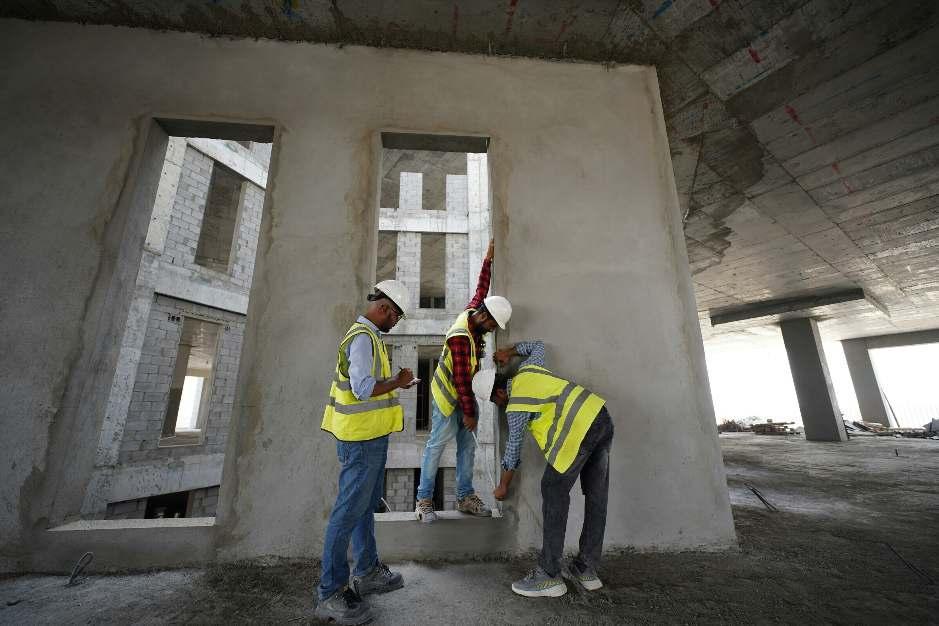
Creating a Legacy of Safety
Creating a legacy of safety within the manufacturing sector begins with a shared commitment to prioritizing the well-being of every employee. This commitment requires engaging all levels of the organization, from management to frontline workers,inthe conversationaboutsafety.
When everyone understands their role in maintaining a safe work environment, it fosters a culture where safety becomes a core value rather than a compliance obligation. This collective responsibility not only enhances safety practices but also strengthensteamwork andmorale,leadingtoa more productive workplace.
To cultivate this culture of safety, organizations must implement comprehensive training programs that are tailored to the speci�c needs of their workforce. These programs should not only cover standard safety procedures but also encourage employeestoidentifypotential hazardsandrecommendsolutions.



By empowering employees through education and training, they become active participants in the safety process, which reinforces their commitment to maintaining a safe workplace. Regular training sessions and workshops can serve as platforms for sharing best practices and learning from past incidents, allowing the workforce to continuously improve their safetyskills.
Communication also plays a crucial role in creating a legacy of safety. Establishing open lines of communication ensures that employees feel comfortable discussing safety concerns without fear of retribution. Regular safety meetings, suggestion boxes, and anonymous reporting systems can provide valuable feedback and insights from employees on the ground.
When management demonstrates that they value this feedback, it not only builds trust but also encourages a proactive approach to identifying and mitigating risks. This two-way communication strengthens the foundation of a safety culture, where everyone feels responsible for maintainingsafetystandards.
Recognizing and rewarding safe behavior is another essential element in fostering a culture of safety. When employees see that their commitment to safety is acknowledged, they are more likely to continue prioritizing safety in their daily tasks. Implementing safety incentive programs can motivate employees to adopt safe practices and encourage their peers to do the same.


Celebrating safety milestones, such as achieving a certain number of days without an accident, reinforces positive behavior and highlights the importance of safety within the organization. This recognition helps create a sense of pride and ownership among employees, further embedding safetyintothe organization'sculture.
Finally, creating a legacy of safety is an ongoing endeavor that requires consistent effort and dedication. Organizations must regularly assess their safety policies and practices, adapting them to meet the evolving needs of the workforce and the manufacturing environment. This continuous improvementmindsetensuresthatsafetyremains a priority,evenasnewchallengesarise.
By fostering an environment where safety is deeply ingrained in the organizational culture, manufacturing companies can leave a lasting legacy that protects their most valuable asset— their employees. Through collective commitment, open communication, recognition, and adaptability, a robust safety culture can thrive, ultimatelybene�tingeveryone involved.






